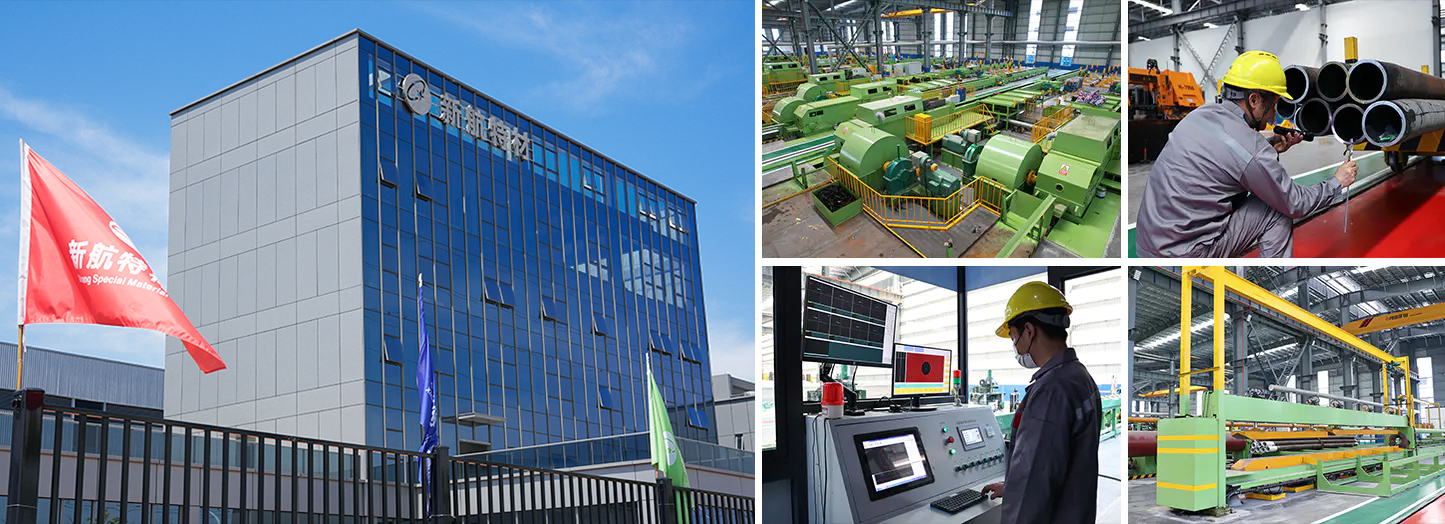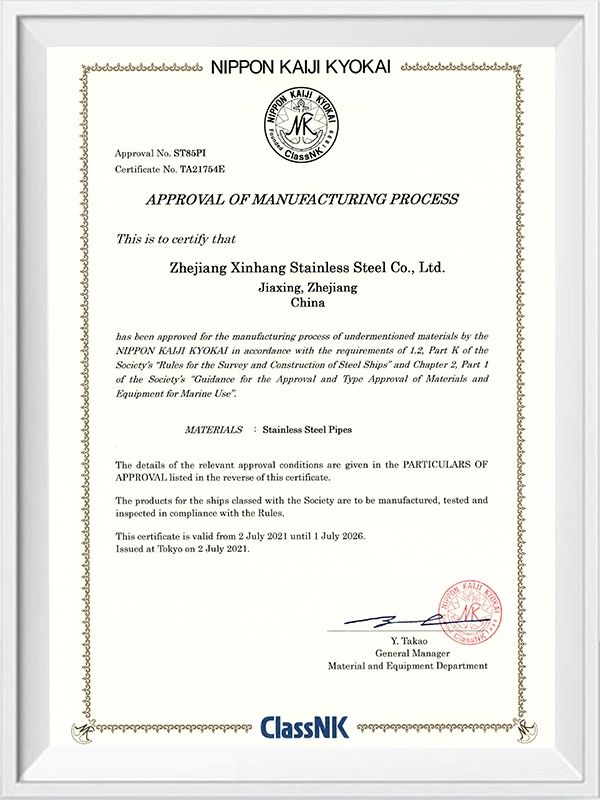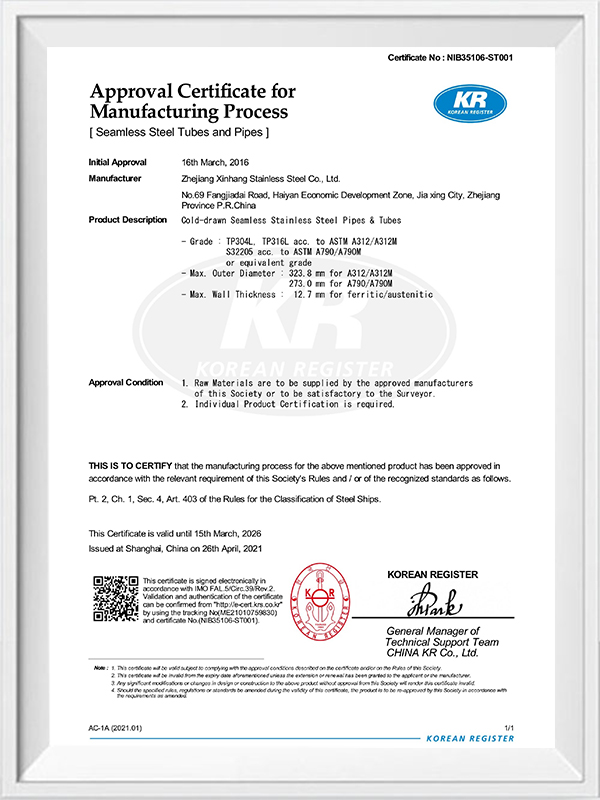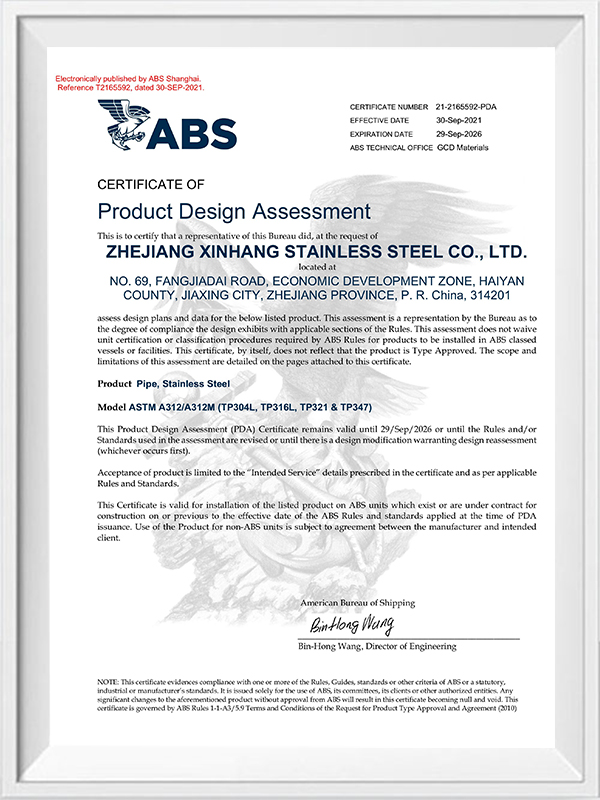

Xinhang Special Material Co., Ltd. Hangzhou Branch is China Stainless Steel Socket Weld Flanges Manufacturers and Stainless Steel Socket Weld Flanges Factory, founded in 2007 and moved to Longyou Economic Development Zone, Zhejiang Province, in 2022. It covers an area of 130,000 square meters, more than 30 production lines, 300 workers, 20 R&D people, 30 inspection people and an annual output of 50,000 tons.
It has passed ISO9001:2008 quality management system, PED 97/23/EC EU Pressure Equipment Directive certification, China Special Equipment Manufacturing License (Pressure Tube) TS certification, ASME certification, provincial enterprise standardization management system, ISO14000:2004 environment management system, cleaner production (green enterprise), and a series of certifications, as well as China Classification Society (CCS), American Bureau of Shipping (ABS), British Register of Shipping (LR), Deutsche Veritas (GL), Bureau Veritas Society (BV), Det Norske Veritas (DNV), and Korean Register of Shipping (KR) factory certification.
The main products include stainless steel pipes, pipe fittings, flanges, valves, etc., which are widely used in petroleum, chemical industry, nuclear industry, smelting, shipbuilding, pharmaceuticals, food, water conservancy, electric power, new energy, mechanical equipment, and other fields. The company adheres to the corporate tenet of "quality for survival, reputation for development" and wholeheartedly serves every customer to create a win-win situation.




Introduction to Alloy Steel Alloy steel is a type of steel that is made by combining carbon steel wi...
View MoreMass Density of Mild Steel: Basics and Practical Importance The mass density of mild steel is a fund...
View MoreUnderstanding Stress Proof Steel Stress proof steel is a type of alloyed steel engineered to resist ...
View MoreIntroduction to Low Alloy Steel Material Low alloy steel material is a type of steel that contains a...
View MoreOverview — what "weight per cubic inch" means for stainless steel "Weight per cubic inch" is simply ...
View MoreHow do you properly install stainless steel socket weld flanges?
Stainless steel socket weld flanges are indispensable components in piping systems, offering robust connections essential for various industrial applications. However, the process of installing these flanges requires precision, attention to detail, and adherence to proper procedures to ensure a secure and leak-free joint. Let's delve into the comprehensive guide on how to properly install stainless steel socket weld flanges.
Preparation is Key: Before beginning the installation process, it's crucial to prepare the pipe ends meticulously. Cleanliness is paramount; ensure the pipe ends are free from dirt, debris, and any contaminants. Even the smallest impurity can compromise the integrity of the weld. Additionally, verify that the pipe ends are straight and devoid of imperfections, which could hinder the welding process.
Fitment and Alignment: Slide the stainless steel socket weld flange onto the prepared pipe end. The fit should be snug, with no gaps between the flange and the pipe. Proper alignment is essential to ensure a uniform weld and prevent stress concentrations. Take your time to align the flange correctly before proceeding to the next step.
Tack Welding: Once the flange is properly aligned, use tack welds to temporarily secure it to the pipe. Tack welds serve as placeholders, holding the components in place during the final welding process. Exercise caution to maintain alignment while tack welding, as any misalignment at this stage can lead to issues later on.
Final Welding: With the flange securely tacked in place, proceed with the final welding. Utilize the appropriate welding technique and filler material suitable for stainless steel. Pay close attention to welding parameters, ensuring consistent heat distribution and penetration throughout the weld joint. Aim for a uniform and complete weld around the entire circumference of the flange-pipe connection.
Post-Weld Inspection: Following welding, conduct a thorough inspection of the weld joint to detect any defects or imperfections. Employ non-destructive testing methods such as visual inspection, dye penetrant testing, or radiographic testing to assess weld quality. Address any anomalies promptly to maintain the integrity of the joint.
Are there any specific considerations when using stainless steel socket weld flanges in corrosive environments?
Material Selection: Not all stainless steel grades are created equal when it comes to corrosion resistance. Choose a stainless steel grade that is specifically designed to withstand the corrosive environment it will be exposed to. Common corrosion-resistant grades include 304, 316, and 316L stainless steel. These grades offer excellent resistance to a wide range of corrosive substances, including acids, chlorides, and salts.
Surface Finish: The surface finish of stainless steel socket weld flanges plays a crucial role in their corrosion resistance. Opt for flanges with a smooth, polished finish, as rough surfaces can promote corrosion by providing crevices where corrosive substances can accumulate. Additionally, consider electropolishing, a process that further enhances the corrosion resistance of stainless steel surfaces by removing surface imperfections and contaminants.
Gasket Material: In corrosive environments, the choice of gasket material is critical to prevent leakage and corrosion of the flange joint. Select gasket materials that are compatible with the corrosive substances present in the environment. Common gasket materials for corrosive applications include PTFE (Teflon), EPDM, and Viton, each offering varying degrees of chemical resistance.
Proper Welding Techniques: The welding process can impact the corrosion resistance of Stainless Steel Socket Weld Flanges. Employ proper welding techniques, such as back purging and post-weld cleaning, to minimize the formation of heat-affected zones and the risk of sensitization, which can make the material more susceptible to corrosion. Additionally, ensure that the welds are free from defects that could compromise the integrity of the flange joint.
Surface Protection: In highly corrosive environments, consider implementing additional surface protection measures to enhance the longevity of stainless steel socket weld flanges. This may include applying corrosion-resistant coatings or linings to the flange surfaces or installing sacrificial anodes to provide cathodic protection against corrosion.
Regular Maintenance: Even in corrosive environments, proper maintenance can significantly extend the service life of stainless steel socket weld flanges. Implement a regular inspection and maintenance schedule to detect and address any signs of corrosion or degradation promptly. Cleaning the flanges regularly to remove accumulated contaminants can also help prevent corrosion.
We'll never share your email address and you
can opt out at any time, we promise.